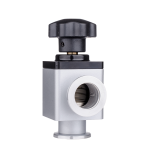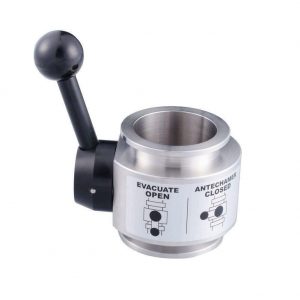
High Vacuum Pneumatic Baffle Valve Instructions
- Safety instructions
The valve is suitable for working medium with air or low corrosive gas. The operating pressure range is 2 × 105Pa ~ 1.3 × 10-6Pa.
Working principle and structural characteristics
The valve can be used as the opening and closing mechanism in the high vacuum pipeline, and can cut off and connect the air flow in the vacuum system. GDQ series pneumatic high vacuum baffle valve uses electric signal as valve switching signal and relies on compressed air as the lifting force of valve plate. When power is lost or compressed air, the valve will automatically close by spring force. The valve has the advantages of stable operation, reliable sealing and long life.
Third, the performance indicators
Opening and closing method: pneumatic
Connection flange standard: GB / T 4982 GB / T6070
Applicable medium: air or low corrosive gas
Valve body leakage rate: <1.3 × 10-7Pa • L • S-1
Valve plate forward and reverse leakage rate: <1.3 × 10-7Pa • L • S-1
life:
> 200,000 times (using 316L hydraulic bellows)
> 500,000 times (using AM350 welded bellows)
> 5,000 times (improved with 316L hydraulic bellows)
> 200,000 times (using fluorine rubber O-ring seal) After the O-ring wears out and leaks, replace the O-ring.
Installation position: DN <300 arbitrary, DN≥300 vertical
Air source pressure: 0.4 ~ 0.6MPa
Air inlet thread size: PT1 / 8
Power supply: standard factory 220v ± 10% / 50Hz,
Specially specified AC110V, DC24V
Fourth, matters needing attention
- After the valve is in the user’s hands, check whether the valve is intact and complete with accessories.
- The valve should be kept clean and stored in a dry room to prevent strong vibration.
- When the valve is not stored for a long time, the valve should be in a slightly opened state, and it should be checked regularly to prevent moisture and rubber parts from aging.
- Prior to installation, the surfaces in contact with the valve and the vacuum should be cleaned according to vacuum cleaning requirements.
- The flanges connected to the valve must not have scratches or welding knobs that affect the vacuum performance.
- Possible failures and clear methods






